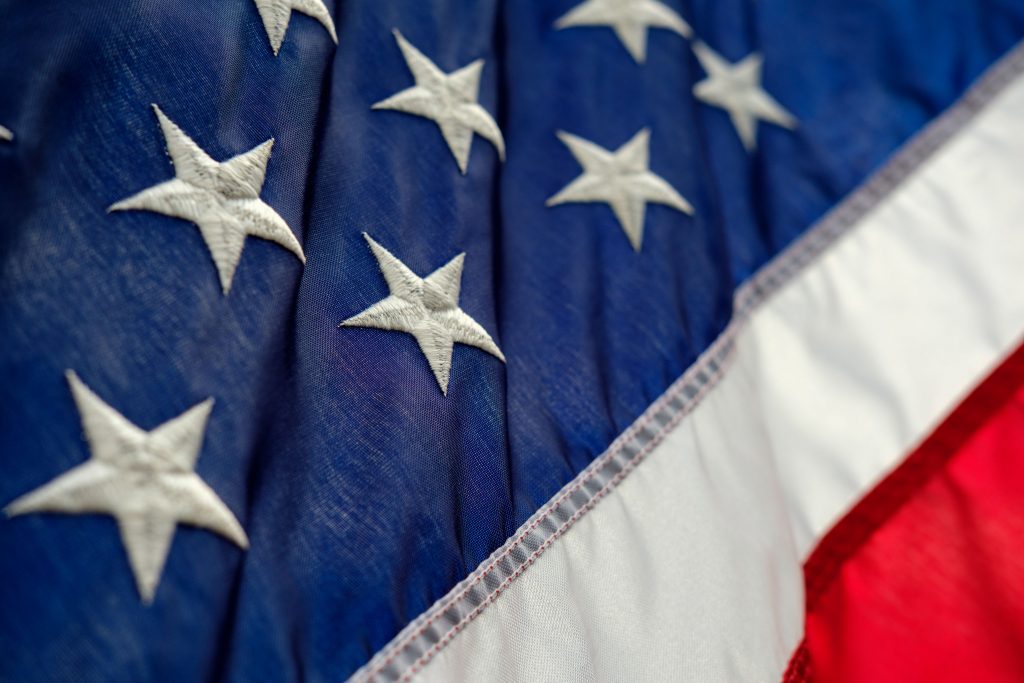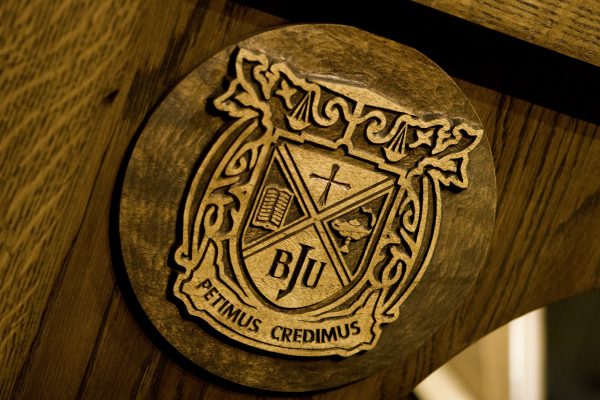Almost all Americans know that July 4 is Independence Day, a day commemorating the issuance of the Declaration of Independence. John Adams, present in Philadelphia for the signing, wrote: “The bells rang all day and almost all night.” He also wrote of the event: “It ought to be solemnized with pomp and parade, with shows, games, sports, guns, bells, bonfires, and illuminations from one end of this continent to the other, from this time forward, forevermore.” Indeed, Americans have followed Adams’s suggestions.
But the issuance of the Declaration, though the most important event of the day, is not the only thing that happened on the Fourth of July. A surprising number of other events and people are also associated with other July Fourths over a period of many years.
A Day for Political Action
July 4, 1789
The politicians of the 1789 Congress apparently did not take July 4 as a recess holiday. They passed a tariff of 8 1/2 percent on imported foreign goods but decided that goods carried on American ships were to be taxed at a rate of 10 percent lower than those carried on foreign ships.
July 4, 1836
The House was also at work on July 4, 1836, when a resolution calling for the recognition of Texas received its approval.
A Day for Building
July 4, 1817
DeWitt Clinton, Governor of New York State, broke ground at Rome, New York, for the building of the Erie Canal. Completed eight years later in 1825, the canal linked Albany on the Hudson River with Buffalo and Lake Erie. It also helped mesh the interests of the Northeast and Midwest over ensuing years.
July 4, 1828
Charles Carroll of Maryland, the last surviving signer of the Declaration of Independence, inaugurated construction of the Baltimore and Ohio Railroad. Chartered one year earlier, the B&O became the first regularly working passenger line in the nation.
July 4, 1848
The cornerstone of the Washington Monument was laid. In a national contest, the design of South Carolina native Robert Mills was selected, though his ornate round base was later discarded. Money to build the monument was collected in donation boxes at polling places on election days. By 1854, the monument was 152 feet tall, but construction was halted for a quarter of a century. Construction began again in 1880, and the 555-foot, 5 1/8-inch monument was finally dedicated in 1884.
A Day for Unveiling New Things
July 4, 1904
President Theodore Roosevelt inaugurated the trans-Pacific cable linking San Francisco and Manila. The President sent his message to William Howard Taft, Governor of the Philippines, and had his answer back from Taft in 12 minutes.
July 4, 1940
An American Negro Exposition was opened in Chicago to commemorate the 75th anniversary of Lincoln’s issuance of the Emancipation Proclamation.
A Day of Births and Deaths for the Famous
July 4, 1804
Nathaniel Hawthorne, famous American author, was born. According to Dr. Ray St. John, professor at BJU, Hawthorne was probably the only writer of the American Romantic era to present Christian themes and values at all sympathetically, even though there is no evidence that Hawthorne ever personally accepted the Puritan faith and values he wrote about in works like The Scarlet Letter.
July 4, 1826
Two presidents, John Adams and Thomas Jefferson, died. Their deaths came on the 50th anniversary of the Declaration of Independence. Both men were appointed to the drafting committee by the Second Continental Congress, although Jefferson was the document’s major author. While the two had not been close when Jefferson served as Adams’s vice president because they were from opposing political parties, they later became friends. In their declining years, they carried on extensive correspondence. John Adams’s last spoke words were, “Thomas Jefferson still survives.” He was, however, mistaken, for Jefferson had died but a few hours earlier that Independence Day. John Adams was 80 years of age; Jefferson was 83.
July 4, 1831
James Monroe, fifth President of the United States, died. Monroe is known today for pronouncing the Monroe Doctrine, which ultimately involved the U.S. in the affairs of Latin American republics over the years, most recently in Honduras, Nicaragua and Grenada.
July 4, 1872
Calvin Coolidge, the 30th President, was born to a judge’s family near Plymouth Notch, Vermont. Though noted for his silence and many of his statements which reiterate the painfully obvious (“When more and more people are out of work, unemployment results”), most of his remarks reveal a common-sense philosophy which has survived far beyond Coolidge’s lifespan.
A Day for Music and Musicians
July 4, 1826
Stephen Collins Foster, beloved composer of American folk melodies, was born in Lawrenceville, Pennsylvania. Although Foster never traveled to the South until after his marriage in 1850, he may have gained his insights of the South from stevedores and dockhands on the wharves of the Ohio River in Pittsburgh. Foster began to submit music for traveling minstrel shows, and he greatly refined their repertoire by popularizing his style of music. His first nationwide hit was “Oh! Susanna!” written in 1846. It became the unofficial theme song for the California forty-niners. “Old Folks at Home,” another famous song, was composed in 1851.
July 4, 1831
The song “America” was first sung in Boston, Massachusetts. Written by Samuel Francis Smith, a young divinity student at Andover Theological Seminary, the song eventually became one of America’s most revered patriotic works.
A Day for Battles
July 4, 1863
Confederate General Robert E. Lee had decided to carry the Civil war into the North in the spring of 1863. He hoped to capture a major northern city—perhaps Philadelphia or Baltimore—which could force the North to come to the peace table or could secure foreign aid for the Confederacy. Lee swung into action with 75,000 seasoned veterans. George Meade, a Union veteran, set out in pursuit. The armies met by accident when some members of a North Carolina brigade strayed into the previously peaceful village of Gettysburg in search of shoes.
Meade’s troops made a formidable line south of Gettysburg holding Culp’s Hill, Cemetery Hill and Cemetery Ridge, a set of boulders called the Devil’s Den, and two hills, Round Top and Little Round Top. Lee’s men failed to drive the opposing troops from these heights on July 1–2. On July 3, General George Pickett and 12,000 rebels, mostly from Virginia and North Carolina, launched a daring but reckless attack on Union-held Cemetery Ridge. Twenty-five canons and 6,000 troops raked them. Each bursting shell, it was said, killed 10 Confederates.
On Independence Day, Lee’s thirsty army began a slow retreat, hindered by 4,000 Yankee prisoners of war and a wagon train of wounded trailing 17 miles long. It was the Confederacy’s last attempt to invade the North.
The same day on the Mississippi River, General U.S. Grant and his 76,000 men took Vicksburg, Mississippi. It was his seventh attempt to capture it; six previous expeditions had failed to capture the city of 5,000 set on 300-foot bluffs. Lincoln said, “The Father of Waters again goes unvexed to the sea,” and the West soon fell completely into Union hands.
A Day for Presidential Nominations
July 4, 1868
A Democratic Convention began in New York City. It later nominated New York’s Horatio Seymour for President and Francis Blair of Missouri as his running mate. They lost to Civil War hero, Ulysses S. Grant.
July 4, 1892
A Populist Party Convention in Omaha, Nebraska, selected James B. Weaver to head its ticket. Their July 4 platform demanded such things as free and unlimited coinage of silver, government ownership of all transportation and communication lines, a graduated income tax, the direct election of United States senators, a shorter working day, and a secret ballot for elections. Some of these demands have become reality today. Weaver made the best showing of any third-party candidate in the 19th century.
July 4, 1900
The Democratic Convention which would select William Jennings Bryan and Adlai Stevenson, Sr., as their candidates began its meeting. The Democrats were defeated by William McKinley and Theodore Roosevelt.
A Day for Independence for Those Far Away
July 4, 1894
The Republic of Hawaii was proclaimed with Sanford B. Dole, pineapple king, as governor. President Grover Cleveland formally recognized Hawaii’s new government on August 7.
July 4, 1901
William Howard Taft, Federal circuit judge, became Governor of the Philippines, ending American military rule. Taft immediately encouraged Filipino participation and began to prepare the Philippines for eventual independence. Japanese activity in the Far East postponed achievement of Filipino independence until July 4, 1946.








